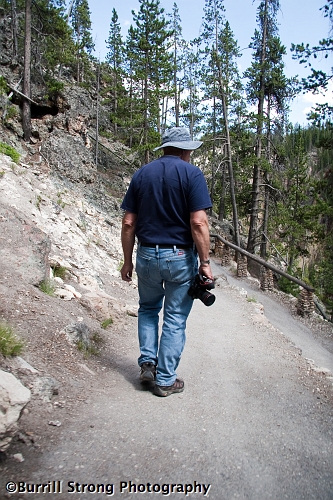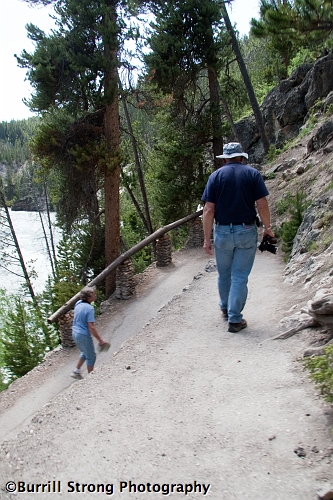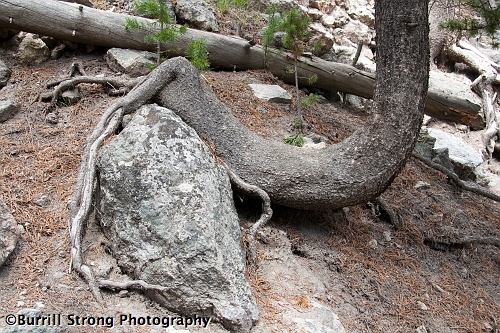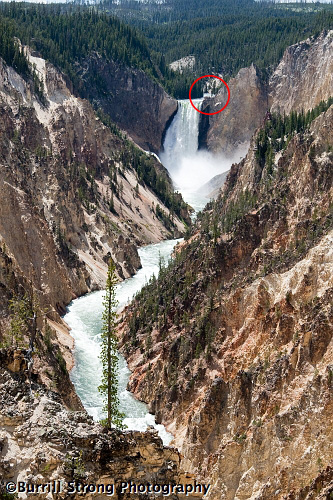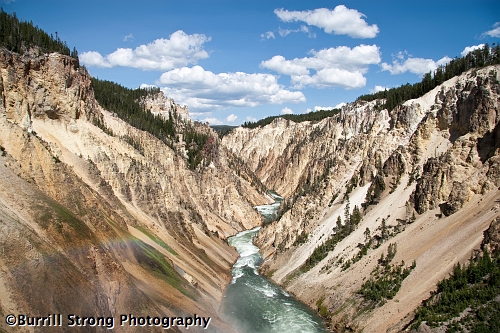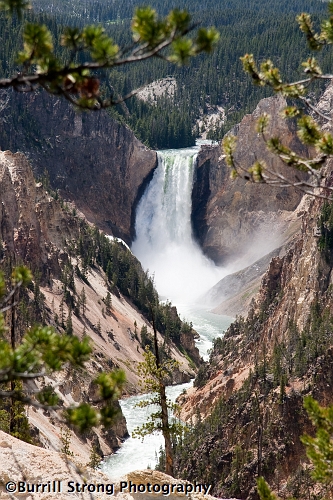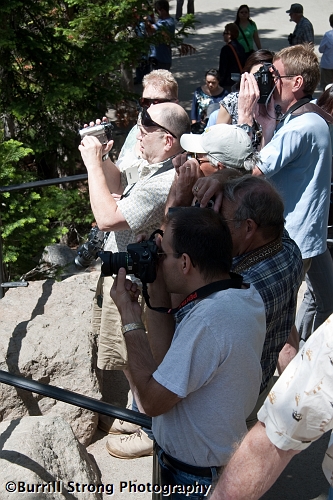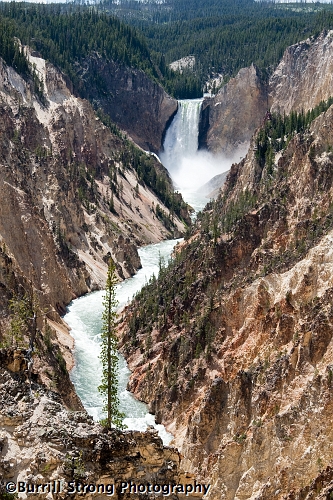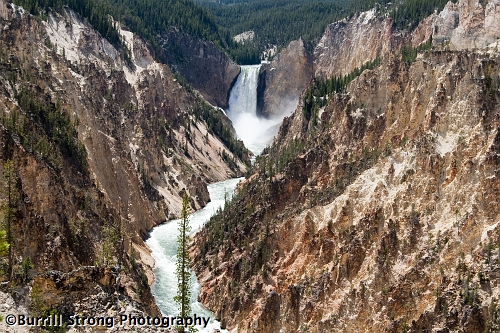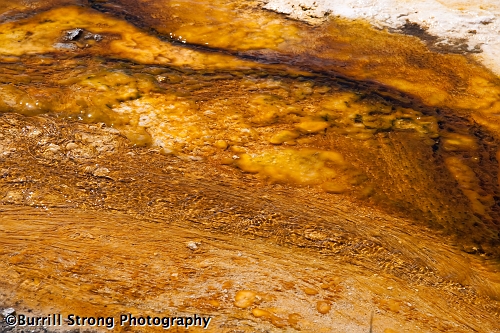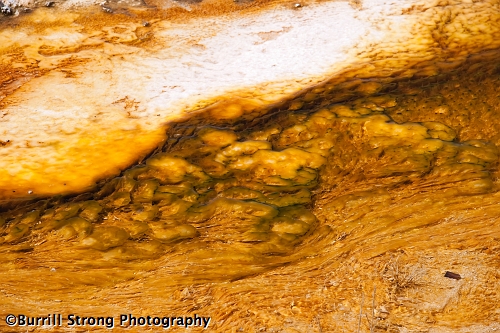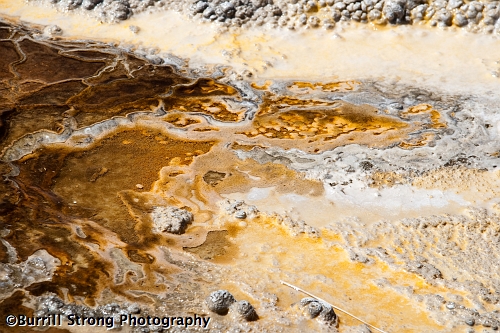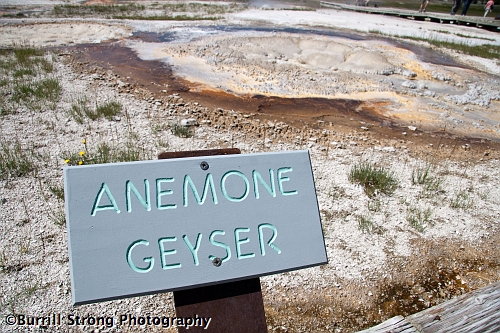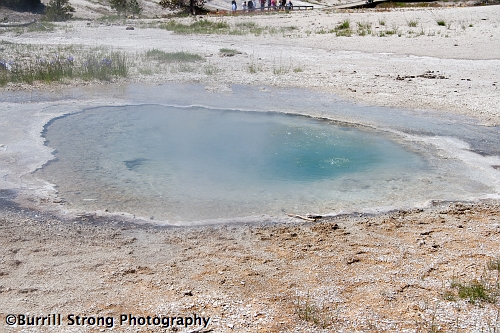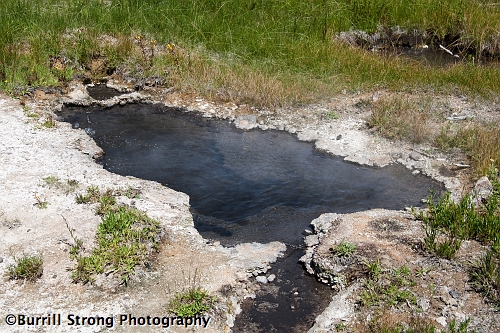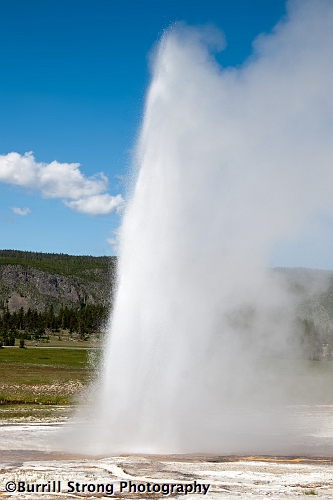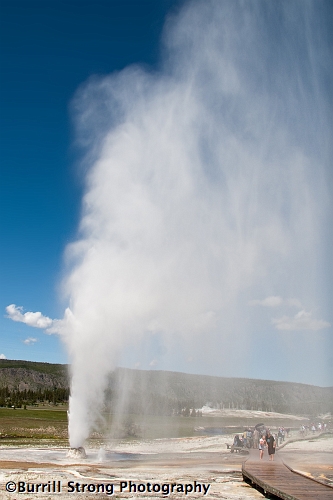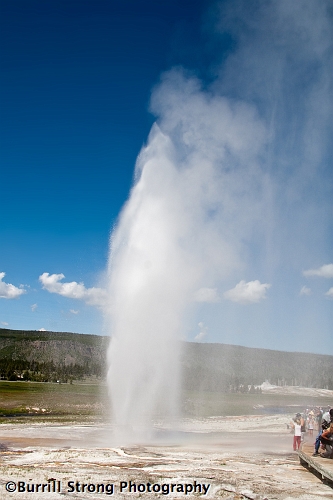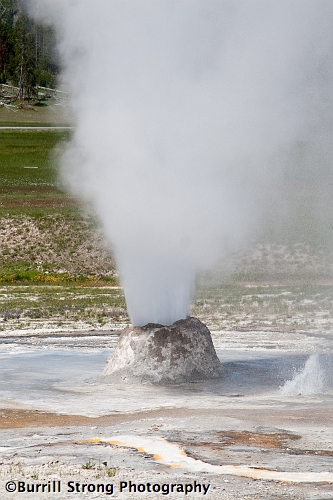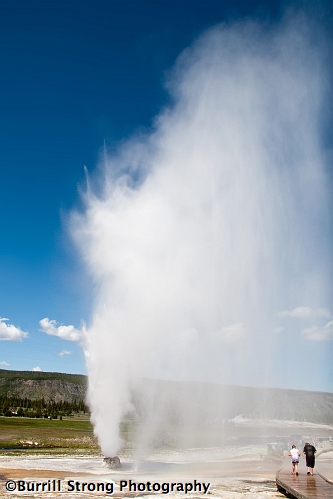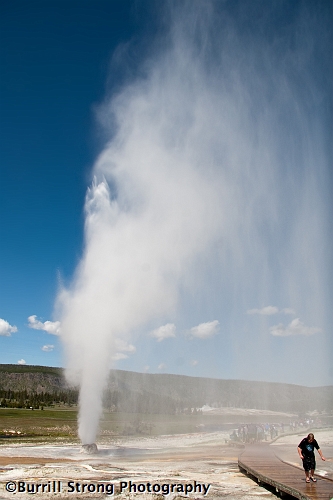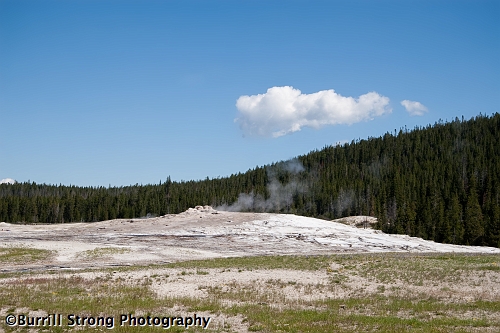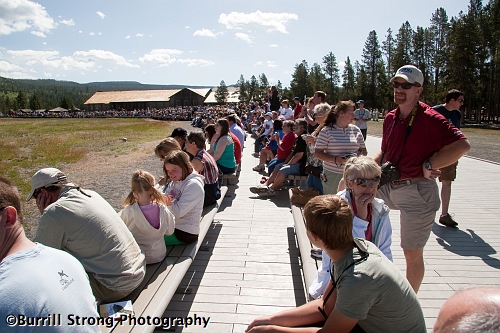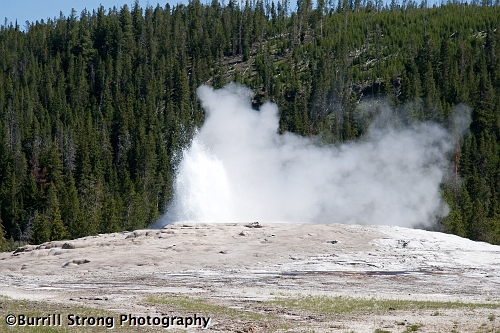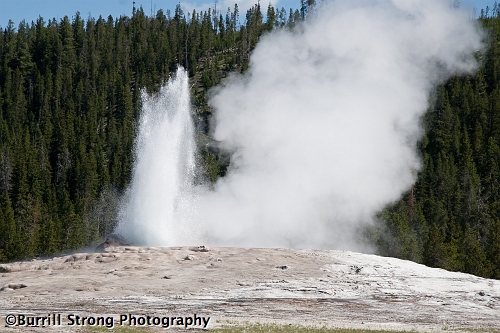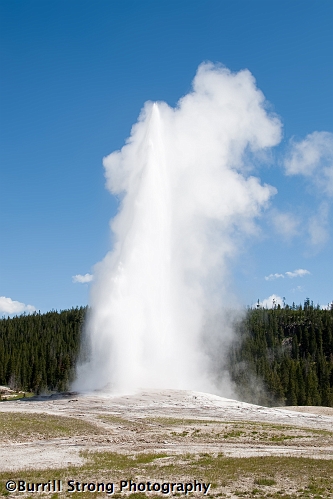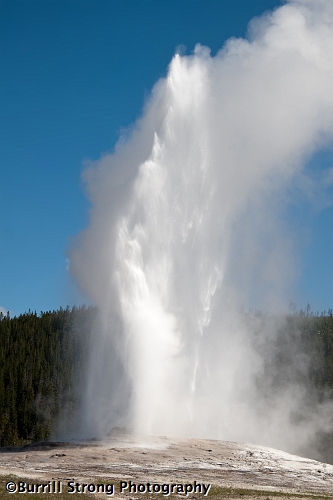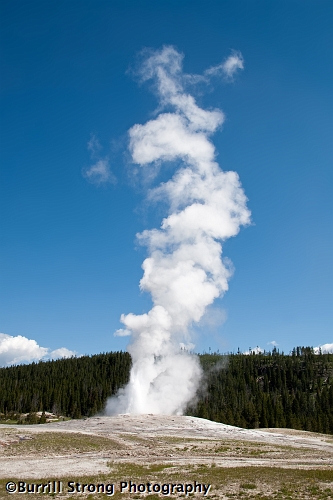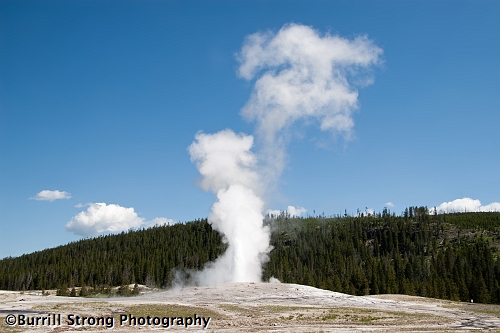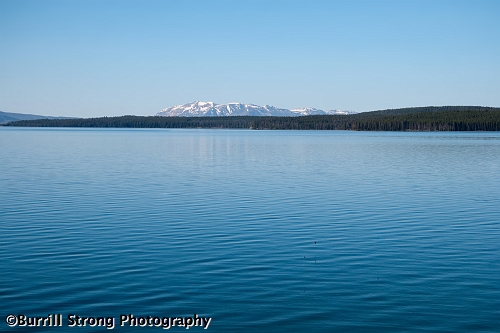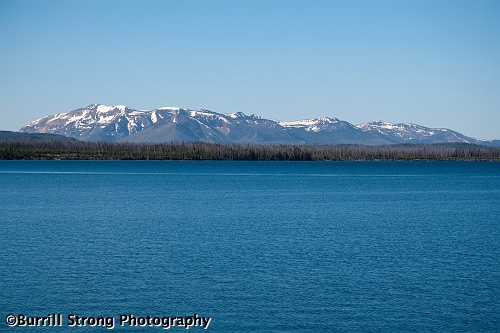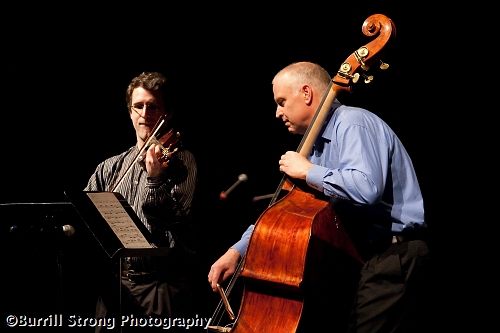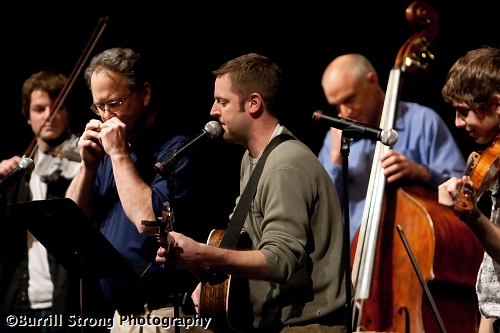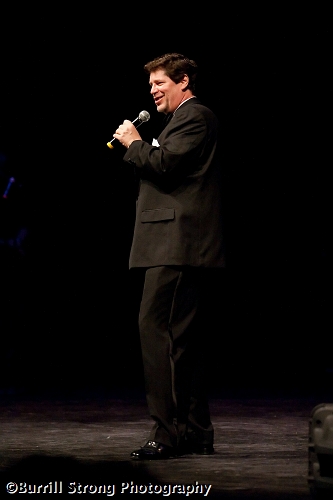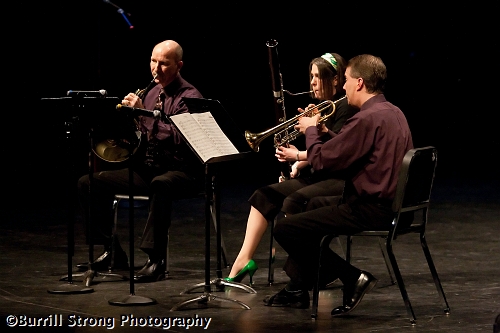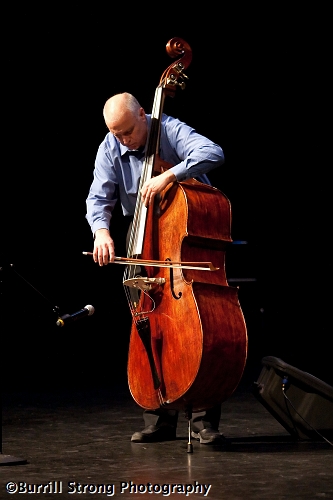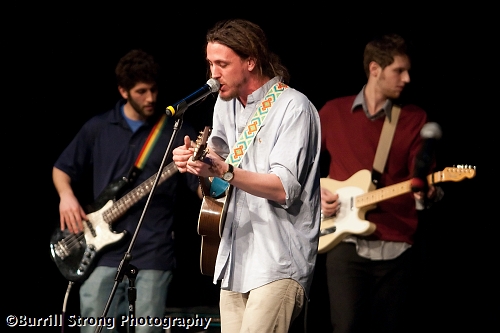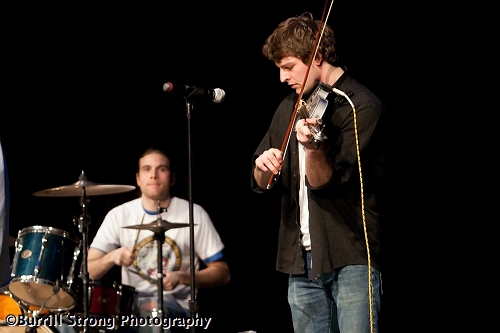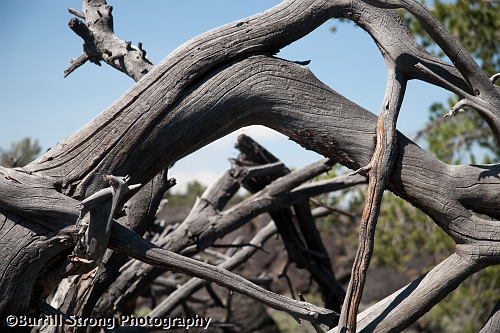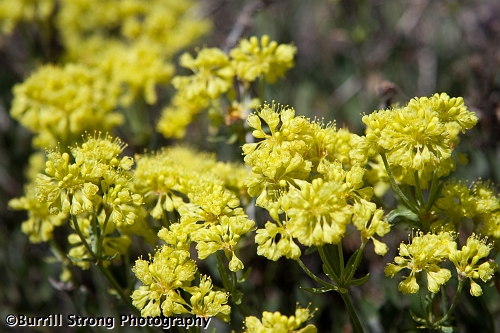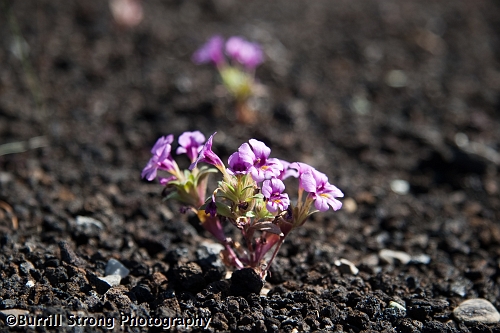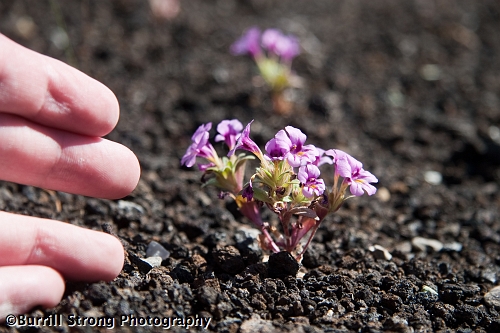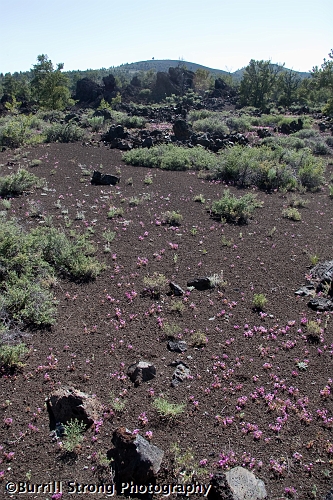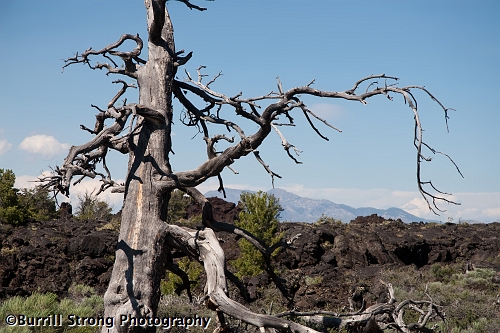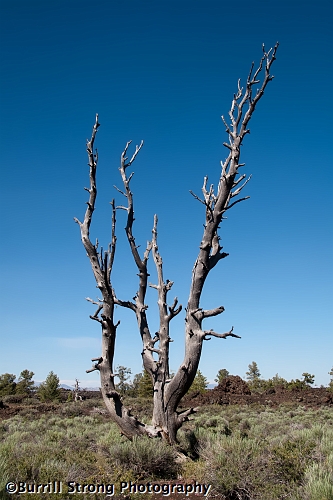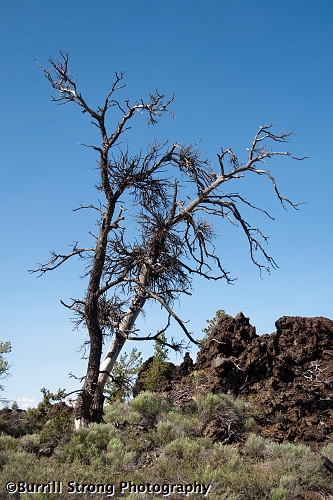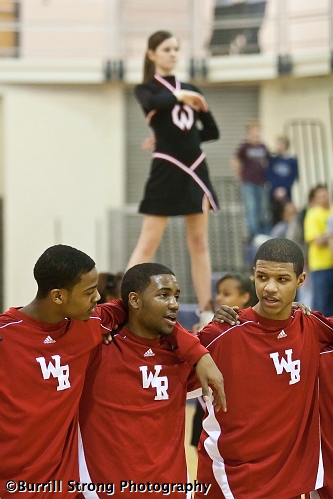Since Yellowstone is a huge park, it takes a lot of driving to see the sights. That’s not such a bad thing, though, because while you’re driving to the next notable feature, you’re surrounded by an endless array of notable scenery. Also, you’re surrounded by an endless supply of turnoffs intended to let you enjoy the scenery at zero miles per hour. Our mid-afternoon travels took us alongside Yellowstone River, a broad river winding through a lush green valley that was eye-catching enough to cause us to stop the car twice to enjoy the view.
Our first stop was at a turnoff farther back and up the hill from the river; from there, we got a splendid view of one of the more serene and welcoming areas of the park. I’d be happy to live there, except I wouldn’t want to ruin it by living there. (That’s how I wish more people would view small towns. Hey, folks: if you all move into a small town to live the small-town life, it’s no longer a small town. Think about it.)

Not far down the road, we stopped at another turnoff that provided a view of what looked like an entirely different river from the one that seemed to be wandering haphazardly through a meadow. (A few miles downstream, the Yellowstone River plummets over the two majestic waterfalls of the Grand Canyon of Yellowstone. That water has no idea of the thrill ride that awaits it.)

If you look closely, you may notice a curious dark line angling through the grass towards the river. That’s a path where the grass has been worn away. In my infinitely sensible wisdom, I assumed that path was something created by official park human ranger people for use by official park human tourist people, so I took full advantage of that very thoughtful amenity. It was unexpectedly narrow — at best, barely as wide as my two feet — but it led me right down to the river’s edge, where the view was even better.
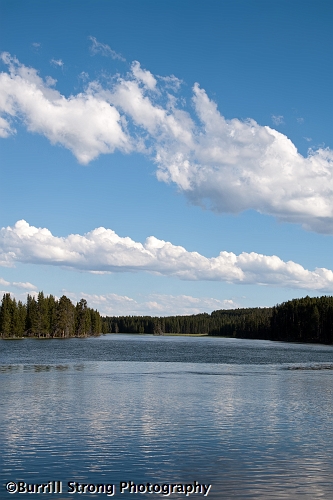
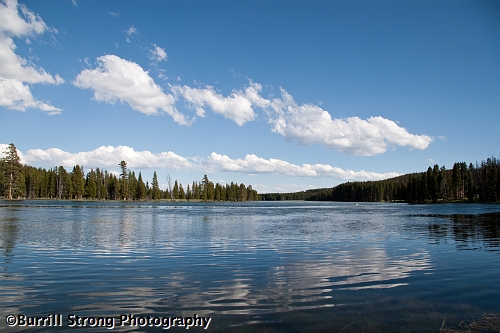
When I got back to the car, I realized the path in the grass wasn’t there for use by park visitors; rather, it was a path created by park wildlife, much like the deer trails I’ve seen here in Michigan. It was at that moment I realized no matter how hard you try to avoid being one of those tourists, at some point during your visit you will be one of those tourists. It’s inevitable: when you choose to don the mantle of tourist, you are doomed to be a complete idiot one time. That, I think, should be the First Law of Tourism. I’m just glad my unavoidable moment of idiocy was fairly benign and not life-threatening.


